
4 minute read
July’s Tip of the Month: Cause or Effect? Understanding What’s Really Hapening in Your Golf Swing
BY RYAN WILLIAMS PLAYER DEVELOPMENT PROFESSIONAL
One of the most common conversations I have with students and members centers around what they think is happening in their golf swings. Typically, their observations focus on the most visible or noticeable flaw—what they or their playing partners see during a round. More often than not, however, what they’re noticing is the effect of an issue rather than the cause.

Renowned instructor Sean Foley once said, “What golfers see as the problem is usually the athlete inside of them fixing the problem.” In other words, what looks like a swing flaw may actually be the body’s way of compensating for a deeper issue. With that in mind, let’s explore a few common examples that may resonate with you.
Early Extension: The Real Culprit Behind a Common Flaw
What It Looks Like:
Early extension occurs when a player’s hips move toward the ball during the downswing, causing them to “stand up” through impact. This motion reduces space for the arms and hands, often leading to a high handle position and compromised strike quality.
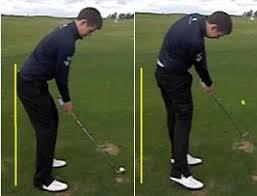
What Causes It:
The most frequent root cause is a steep transition at the top of the swing. When the club gets too vertical, players instinctively move their hips forward to make space for the club to come through. If they didn’t, they’d either hit far behind the ball or make contact on the toe.
Even elite players aren’t immune— former World No. 1 Jason Day dealt with early extension. For him, it was a necessary compensation for a steep downswing. However, the high-speed nature of his swing combined with these compensatory moves led to significant back issues. Working with coach Chris Como, Jason developed a deeper backswing turn and shallower transition, which reduced his need to early extend. Today, he’s back to playing excellent golf—and doing it pain-free.
Before: Limited turn, steep in transition
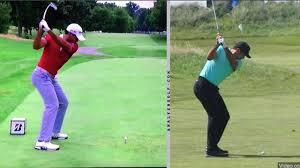
After: Deeper turn, shallower downswing
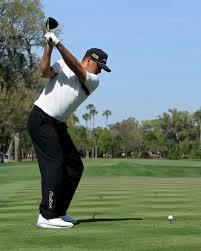
Over-the-Top and Runaway Paths: What They Really Mean
Over-the-Top:
Perhaps the most commonly heard swing diagnosis, “coming over the top” refers to a downswing path that travels too far to the left (for right-handed players). This often stems from an open clubface. Rather than learning to square the face—by improving grip or releasing the club—players subconsciously swing left in a desperate attempt to avoid a miss to the right. Unfortunately, this only leads to weak slices and loss of distance.
Another reason players swing over the top is to guarantee ball-first contact. While this might lead to more solid ground strikes, it introduces significant directional issues—typically shots that start left and either stay left or fade right.
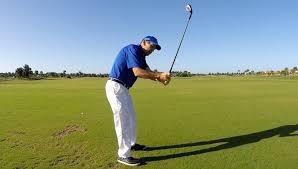
Runaway Paths:
On the opposite end of the spectrum is a less common but equally troublesome issue: a swing path that goes excessively to the right. Termed a "runaway path" by coach EA Tischler, this typically occurs in better players whose clubface remains too closed throughout the swing. Their instincts push them to rotate early with the lower body, leaving the club trapped behind. The result? Pushes, snap hooks, and the dreaded two-way miss.
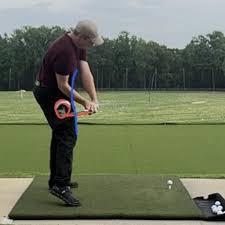
The Key Lesson: Focus on the Clubface First
Whether it’s over-the-top or runaway path, both are effects—not causes. In both cases, the real issue lies with the clubface. In my 12 years of coaching, I’ve noticed a consistent pattern:
• Higher-handicap players tend to associate direction with swing path.
• Better players understand that direction is primarily controlled by the clubface.
Remember: the clubface controls the ball’s starting direction. Until we control that, it’s impossible to control where the ball ends up.
Ready to Find the True Cause?
These are just a few examples of common swing patterns that are often misunderstood. If you’re unsure what’s happening in your swing—or tired of fighting two-way misses—the first step is identifying the real cause.
Stop by the Pro Shop or reach out to schedule a swing evaluation. Together, we’ll get to the bottom of your swing and help you play your best golf yet.










